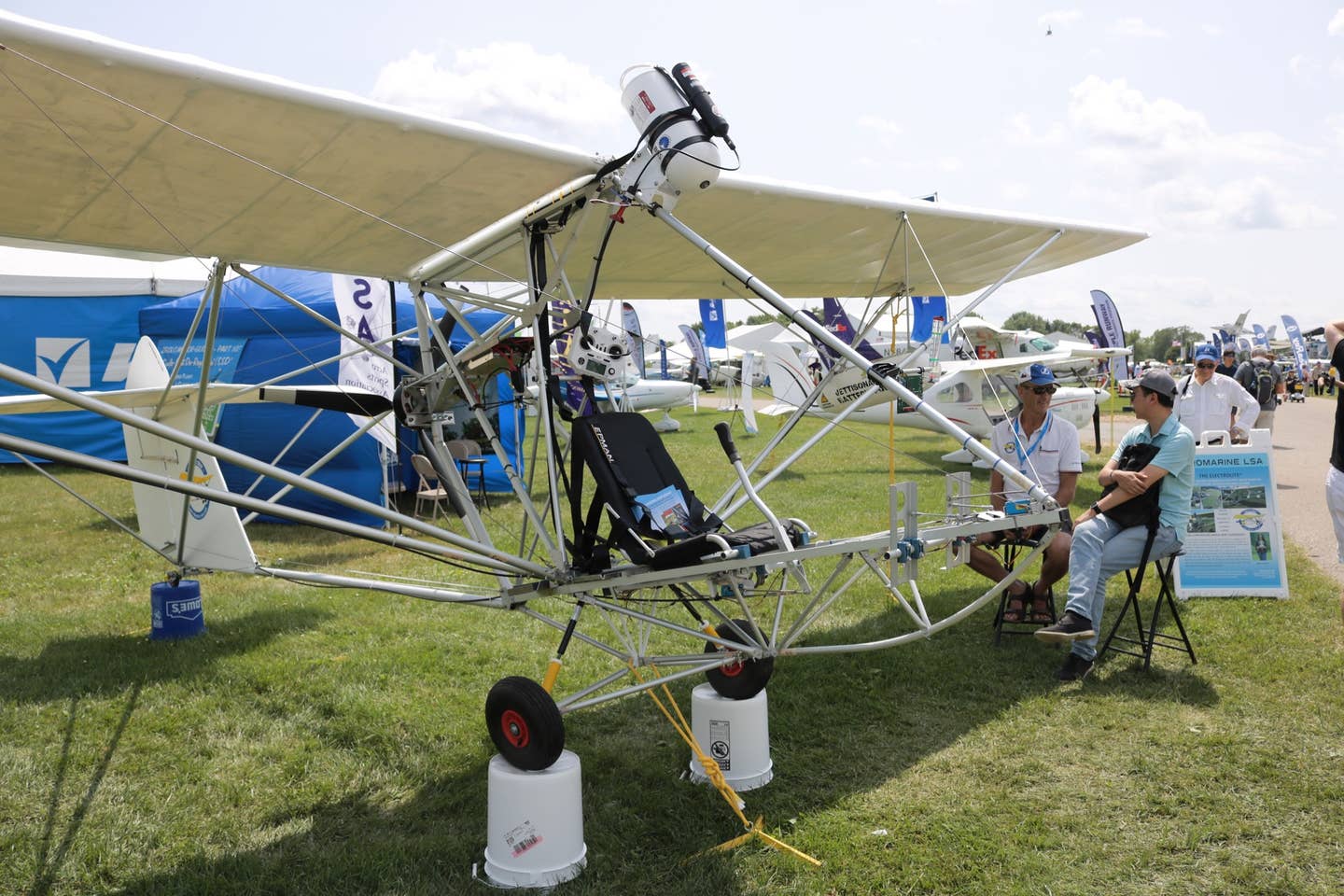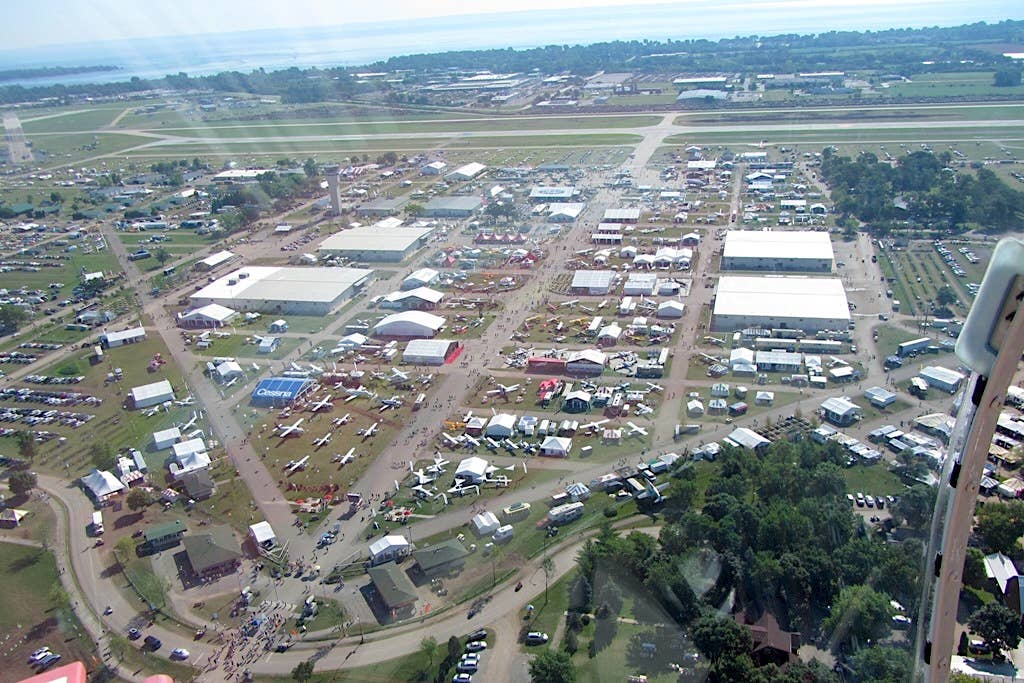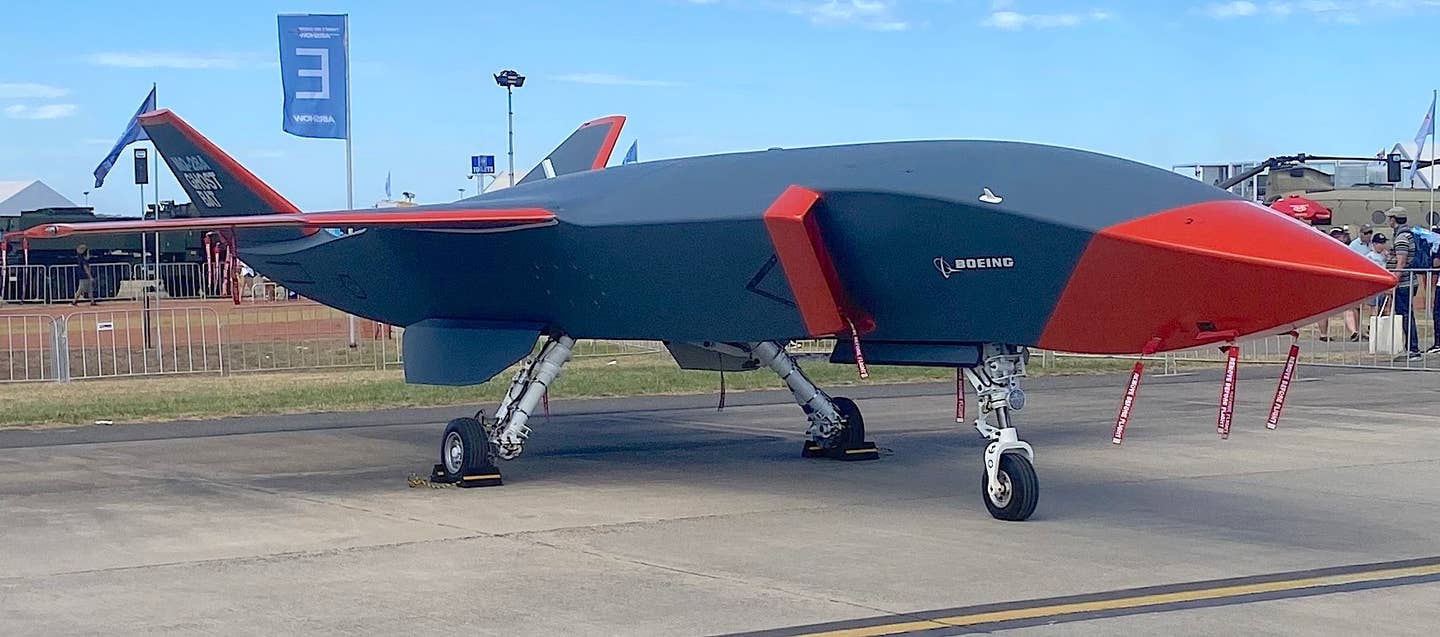Electrolite Electric Ultralight To Offer Remote Piloting
Aeromarine’s Electrolite Part 103-compliant ultralight combines electric propulsion and full fly-by-wire to provide a remote piloting capability intended to make flight instruction possible. Conceived by Chip Erwin, the Electrolite features…

Aeromarine's Electrolite Part 103-compliant ultralight combines electric propulsion and full fly-by-wire to provide a remote piloting capability intended to make flight instruction possible. Conceived by Chip Erwin, the Electrolite features a 25-HP electric motor, twin strut-mounted batteries and the capability of turning control of the aircraft over to an instructor on the ground. It's based on the Zigolo gas-powered ultralight.
“Since there are no two-place training ultralights anymore,” says Erwin, “I wanted to come up with a way to give students not just dual instruction from the ground but to provide a safety net” in case something goes wrong during instruction. The Electrolite will have optional fly-by-wire servo controls, which can be low-powered if the aircraft is light enough, Erwin says.
From the ground, an instructor will have the ability to take control of the aircraft and can see through video cameras both the pilot’s face and the view ahead. In addition, Erwin is keen to monitor pilot biometrics as a means of judging stress, which, he says, should be less if the student knows the instructor can take over at any point. Not only can the instructor take control of the Electrolite, “he can even blow the ‘chute,” says Erwin, referring to the ballistic parachute. Erwin says the FBW Electrolite will also have "envelope protection as well as a return-to-base and land feature which might be useful in case of a communications link failure."
Erwin says that the otherwise conventional Electrolite will be available soon but that the remotely piloted version will be released only after "a LOT of testing."
Another novel feature of the Electrolite is the battery placement. “We need the batteries along the center of gravity near the pilot, so the solution is either to have the pilot sit on them or place them on the wing struts,” Erwin says. What’s more, the Electrolite has a system that would allow the pilot to pull a cord and let either battery pack dangle from a tether in case of fire.
Expected performance is in the 30-45 MPH range, according to Erwin, with a 22-MPH stall speed and a takeoff and landing distance of around 100 feet. The batteries offer one hour of endurance can be fully charged in 2.5 hours on a single charger or 1.5 on two.






